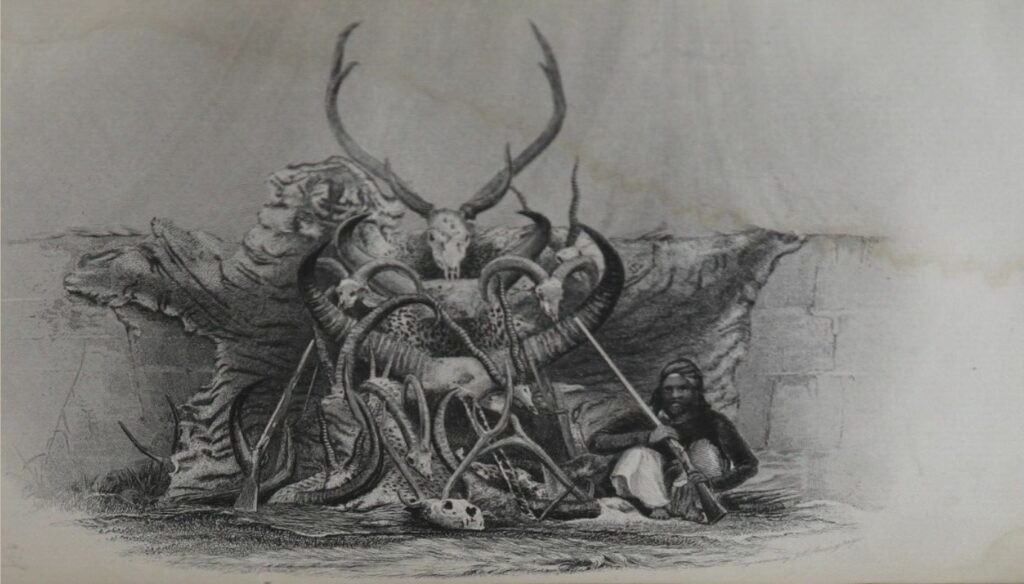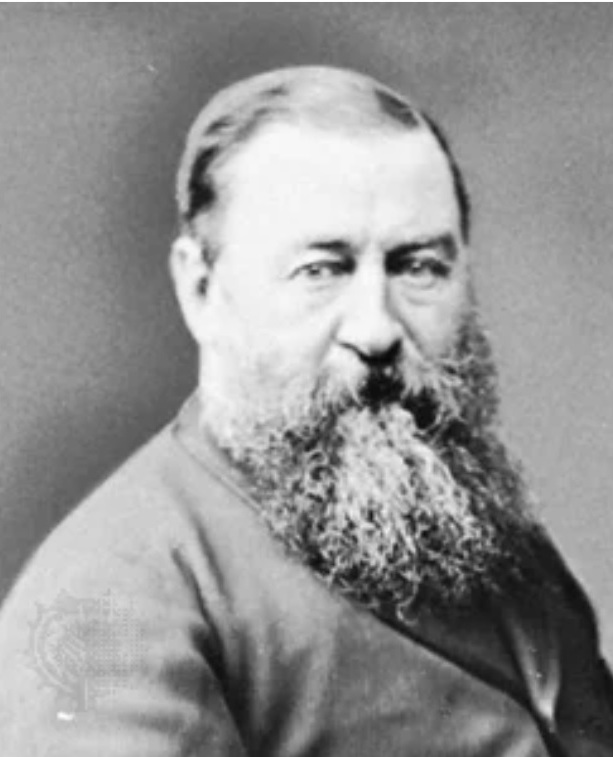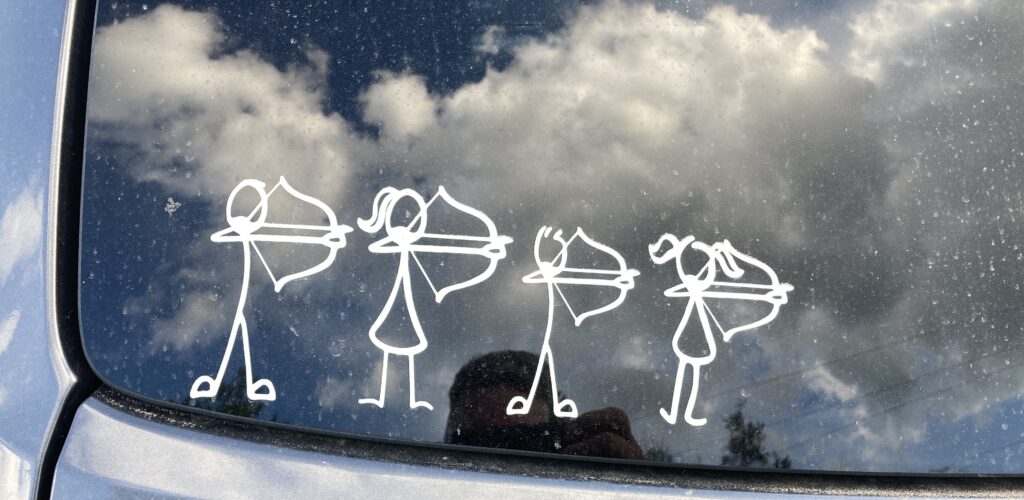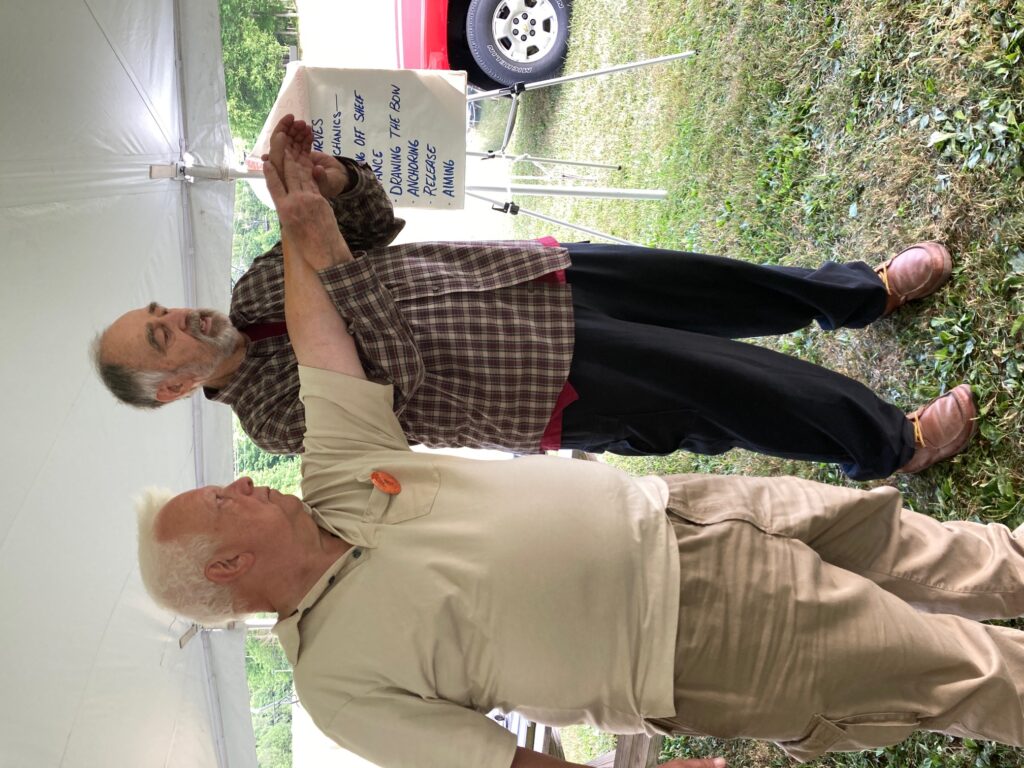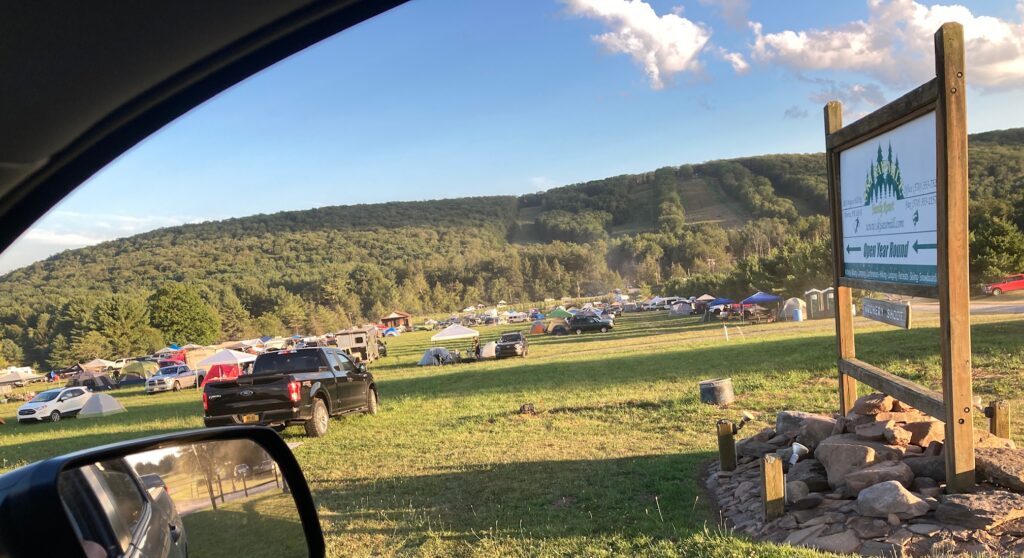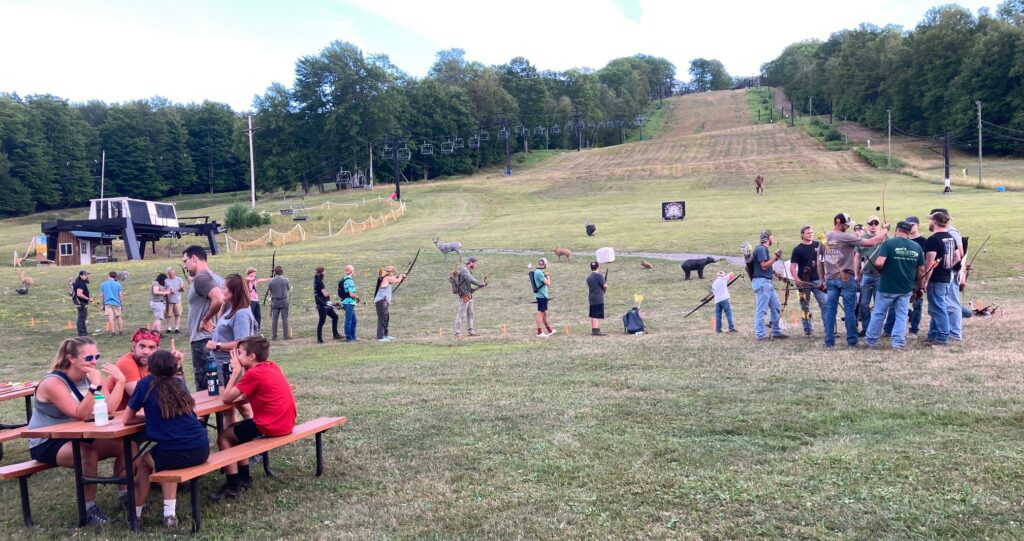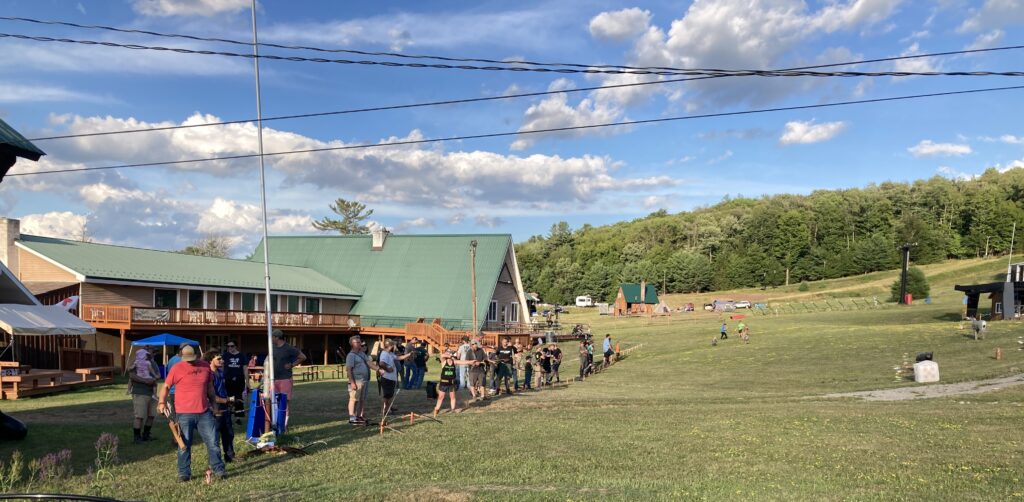Posts Tagged → magnum
Is sitting in a box actually hunting?
Hunting season is cold, and getting outside to seek deer or bear or really any other wild game animal requires a person to put up with some level of discomfort. You can put a lot of effort into hunting, and still come up empty handed. So to up the odds of escaping the attention of deer and bear, some hunters created hunting blinds up in trees. The least difficult ones were railroad sikes driven into a tree to be used as a ladder, and we would hoist ourselves up onto a stout lower limb, and there wait for a shot at a passing deer.
The truly old tree blinds from the 1930s and 1940s were ridiculously frail, made of random assortments of surplus lumber; practically death traps as soon as they were nailed up to living trees. The better old fashioned tree stands would usually be put on what we called an “Indian tree,” where someone a long time ago had deliberately bent over and caused a tree to grow parallel with the ground.
When the horizontal bent limb was at least a foot in diameter, enterprising hunters would find creative ways to attach a stable platform, usually reached by a dangerous rickety wooden ladder made out of woods trash and nails. Platforms ranged from plywood to rough cut boards, some with railings and tattered old olive drab canvas and maybe a stool. Deluxe versions had some sort of roof or covering to keep rain, snow, and sunshine off of the hunter. These elevated hunting blinds were usually eight to ten feet up off the ground, and if the rickety blind did not fall down and kill you, the hunter, then you could usually use it to kill a deer. Despite requiring skill just to stay in them, these blinds were always in demand, and elders got first dibs.
Here I am talking about the American Northeast, and Pennsylvania, specifically. Not about India, where the elevated machan gave hunters of dangerous game not only an opportunity to shoot before being detected by tigers and leopards, but a chance to get in at least one more shot or even a stabbing blow with a spear before the claws and fangs were at your throat.
Fast forward fifty years, and now elevated blinds are everywhere. But they are not like the old rickety kinds jimmied onto trees with long spikes us older guys fondly recall. Witness the rise of the elevated box blinds, which are light years ahead of the rickety wooden tree stands in use when I was a kid. These new ones look like Martian landers, and are sold along the side of RT. 15 from Duncannon to Williamsport, as well as anywhere farm machinery and grains are sold, or even in Amish farm yards.
These modern elevated hunting blinds are airtight, have windows that open and close, and safe ladders or steps made of treated lumber of metal. They are downright sophisticated, and one farm lease I know of has propane heaters in all of their elevated “huts” where guys literally cook their breakfast while waiting for a deer to show up out one of the sliding windows. Some of them are big enough to hold a whole family, and indeed these are like little remote hunting cabin outposts, where everyone from Pap to the youngest kids can comfortably take a poke at a deer from a steady rest with plenty of quiet encouragement around them.
The question is, Is this elevated box blind business actually hunting?
My four-plus-inch-thick 1987 Random House Dictionary (the resilient if lonely, unknown cornerstone of our written culture) says Hunt: To chase or search for game or other wild animals for the purpose of catching or killing.
How much chasing or searching do you see going on from the ubiquitous elevated box blinds?
Not a lot. Well, none. Shouldn’t hunting involve actual pursuit and physical exertion? Don’t we need to earn our kills?
Go on YouTube or Rumble, and you can watch hundreds of “hunting” videos of hunters sitting in elevated box blinds, overlooking crop fields and power lines. These hunters usually have a long period of self-discussion to their camera about what they are looking for, any shots taken and misses they have had, etc. They have tripods and bipods, heaters, shelves with food, windows, and are generally protected from the punishing elements that mark hunting season.
The most dispiriting of this video genre has little kids holding forth, as if experienced adults, about the relative merits of various bucks caught on cell camera trail cams that very morning, and whether or not any of them are good enough for our young camerman.
And so I think we have to ask if this elevated box blind is not really hunting, then is it good for hunting? If maintained as a hunting method after their first one or two confidence building kills, the little kids are for sure being ruined by this stuff. Because it is not reality.
People who think that hunting season solely involves sitting in one spot all day, especially an enclosed and elevated spot, and then stiffly climbing down to either bitch about the lack of deer or worse, to boast about one’s prowess whacking “the big one“, are not hunters. They are shooters. If they have at all practiced target shooting before season, and they have some huge Hubble Telescope mounted on their Million Magnum Blastem Rifle, then surely they can make that three hundred yard shot on some unsuspecting deer eating dinner in a crop field.
Sorry to be negative about this, but we are losing our souls to these elevated blinds. Yes, they make hunting season more comfortable, and they make ambushing and surprising our quarry easier, but they are really dumbing down and whittling off our hunting instincts and skills, our woodcraft that separates us from the flatlander slobs who have no self reliance abilities. Hunting is not supposed to be easy, or comfortable, it is supposed to test us and make us earn the trophies we kill.
In Europe and Asia, hunting was used until the 1800s by warriors to hone their combat skills. Nothing like dismounting your horse to face off at ground level with a mean 4,000 pound Gaur or a ferocious 1,000 pound wild boar, armed with a stout spear in hand and a short sword at your hip. Back then, hunters were tough. As were our own American Longhunters on our frontier.
You want to actually hunt? Go do a deer drive like the BNB Outdoors kids, or with The Hunting Public guys. Or take a quiet, slow still hunt woods walk like John does at Leatherwood Outdoors. These hunts take skill and effort, which is the heart and soul of the chase. Everything else is just a hands-on video game at this point. No thanks.

A deer taken while still hunting two weeks ago, with open sights. Don’t look too closely, it was hit between the eyes.
Eastern Traditional Archery Rendezvous 2022
Jack Keith brought me to my first Eastern Traditional Archery Rendezvous in 2000, back when it was held at Denton Hill State Park in Potter County, Pennsylvania. Jack was the new and the first president of the Pennsylvania Parks and Forest Foundation, fresh from the Army National Guard out at Fort Indiantown Gap. I helped Jack get the brand new PPFF office set up, and he treated me to a trip up north that changed my life.
At the 2000 ETAR, Jack introduced me to Mike Fedora, who was one of the individual forces behind resurrecting traditional archery in America. Many people will argue that traditional archery never went away, but after Mike Fedora started making modern stick bows in reflex-deflex (a high performance combination of long bow and recurve), a lot more bow makers joined in. Fedora made me a bow to my body’s specifications that fit me like a glove, and that I still use. It is a 52 Lb @ 28″ reflex-deflex that is an extension of my soul. Having hunted small game and deer as a kid with cheap fiberglass bows and also a basic Fred Bear bow, I was excited to get my very first custom bow.
Fast forward 22 years and ETAR is now held at Ski Sawmill on the Tioga County-Lycoming County line, on the beautiful Oregon Hill plateau near Pine Creek Valley.
Two years ago my son purchased his second custom bow at ETAR (his first was when he was eight years old). It is by David Darling at The Kalamazoo Bow Works, a 46# @ 25″ draw beautiful statement about how far bow making has come in the past twenty years. Better epoxies, better bow presses, better materials, and constant refinements of the reflex-deflex style now yield bows that are as light as a feather, but which pack enough punch to take any North American animal.
Last week I got to participate in one of traditional bow hunter Fred Asbell’s classes. Although Mister Asbell is 82 years old, he is still out shooting a traditional bow and helping people figure out everything from their grip to their release to how and when to draw on a deer that is just five yards away. While you can watch online videos of sheep hunters killing huge wilderness rams at 450 yards with ultra magnum rifles topped with the Hubble Space Scope all day long, what you won’t see much of are the rare Fred Asbells, taking huge trophy rams with a recurve at 40 yards after a day-long crawl. Fred Asbell is a legend for a reason, and we are so fortunate to have him helping us today.
The two things that Mister Asbell said to me that I took away were I must “allow” my brain to follow its natural inclination when shooting instinctively. This allowance is a natural flow that is easily interrupted by overthinking a shot, aiming a shot, etc. Second, he said that in order to ingrain that natural pattern of allowance so that it becomes truly instinctive, I must both “practice daily,” and make sure that I am “practicing smart.” Meaning, concentrate on each and every arrow being released. He said that as soon as I find myself mindlessly flinging arrows, it is time to stop, because it will simply reinforce bad habits, instead of honing good habits and improving skill.
Advice like this sounds basic, but that’s the genius of someone like Mister Asbell: He breaks down all the artificial complications into just a few words and physical activities that can be easily achieved, if the shooter but focuses each and every arrow released off the bow rest.
Lots of Amish are beginning to camp out at ETAR, and I am hearing more and more from hunting outfitters from Quebec and Newfoundland to Alaska how their Amish and Mennonite clients are showing up with traditional bows and muzzleloaders, and yet outshooting the other hunter clients who are each carrying the super ultra magnums topped with a Hubble Space Scope. Just sit on any of the many ETAR ranges’ firing lines and watch tiny little barefoot Amish kids step up and let fly, and you will understand how they do it, why they grow up to be such amazing archers. No training wheels, no special stabilizers or sights on their bows…
One of the things I always enjoy about ETAR is that I can strike up a conversation with literally anyone, and have a long conversation about American politics and culture, or a long joke-telling session, and always end with a friendly “Real nice to meet ya!”
My own desire is to see Clay Hayes and Ryan Gill set up separate and joint workshops on primitive archery (not just traditional, but a stick and a sinew string with flint-tipped arrows). Plenty of ETAR participants are bringing nice Osage orange split bow blanks, so there is a demand for this kind of truly rustic archery.
This year’s attendance was over 4,000 on Friday, so overall it was probably over 10,000, guessing, when it wrapped up lunch time on Sunday. Major brands like KUIU were represented. To my eye this year’s ETAR was a grand success. If you have a desire to get back to basic archery, so you can have more fun both shooting and hunting, then I recommend visiting ETAR next year. Bring a trailer or a tent, and be prepared to camp out among a lot of other really neat, positive, happy people. When we drove off site, we were watching people begin to potluck Friday dinner. People probably save up their best pronghorn, elk, bison, and venison cuts to cook and share at ETAR. Talk about good people and good times…
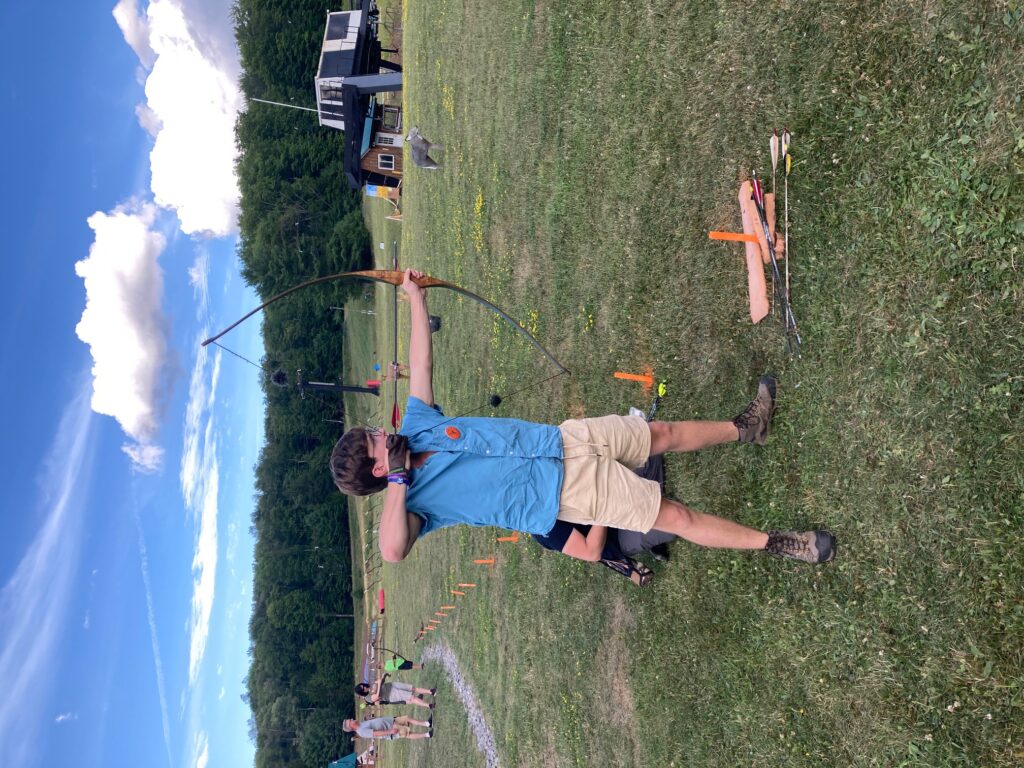
A dedicated young man practicing with his new bow at ETAR 2022. His shooting form was praised by an old timer as “a stone cold killer.”
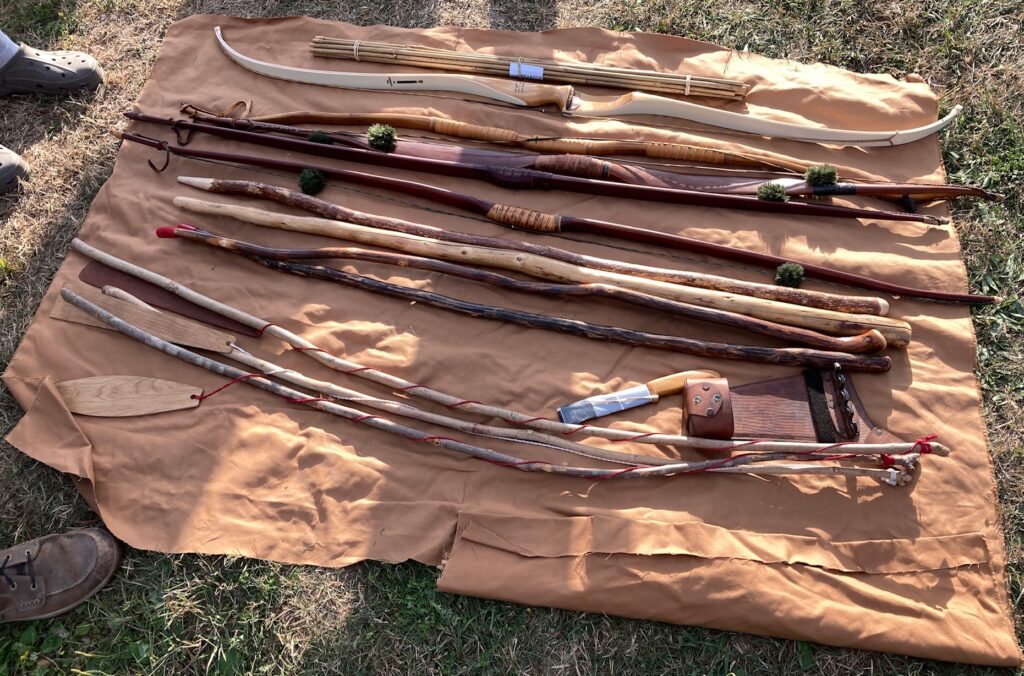
The swap-meet is probably the most exciting opportunity to acquire raw materials, rare items, hand made archery stuff. When it first started the place was a zoo! Probably a thousand people excitedly milling about looking at all kinds of neat items laid out on blankets

The all-American man who got me back into traditional archery. Jack made me a set of cedar arrows twenty years ago that now sit as a remembrance to this amazing human being. Dear Jack, it is good you are not here to see what has happened to your beloved West Point, your beloved US Army, or your beloved America…but don’t worry, we will fix it








